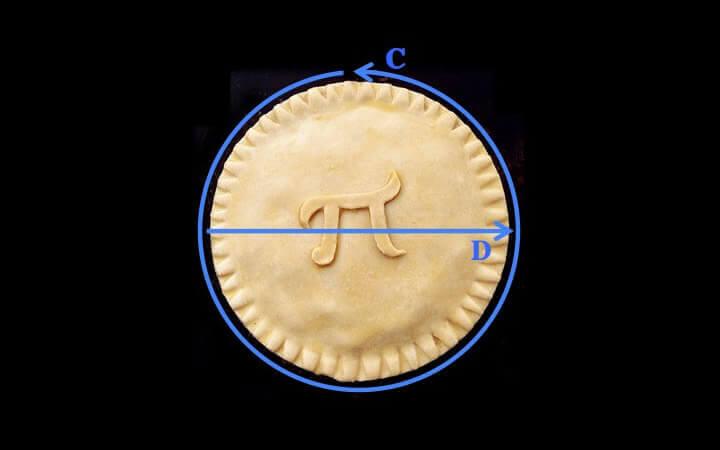This coming Monday, March 14th, brings us back around to a very special date on the calendar: Pi Day!
Admittedly, the hype around Pi Day this year probably won't be at the same level of last year. If we take a step back and think about it, it was 2015, which meant Mathletes (like John Urschel) everywhere were celebrating the date of 3/14/15 because it approximated Pi to five digits (3.1415).
 Courtesy: Twitter
Courtesy: Twitter
And don't even get us started about the instant it turned 9:26:53 on that day, when arithmophiles in every time zone were rejoicing about the approximation of Pi to a full ten digits (3.141592653).
But, taking time every year to celebrate and highlight this beautiful, irrational number is definitely warranted. Most of us probably remember seeing Pi in math classes, especially in the formulas for the area of a circle and the volume of a sphere.

But, if we take a deeper look at Pi, we can start to marvel at its paradoxical nature of being simultaneously incredibly simple and unbelievably complex.
Pi is a transcendental number defined as the ratio of a circle's circumference to its diameter.
Simple, right? It is, until you start to think about how that simple ratio is embedded in an incomprehensible number of ways in the world around us — from the physics of Einstein's theory of relativity, to the chemistry of electron orbitals, to the biology of the circadian rhythm, to being part of the Euler Identity, the "most beautiful equation" known to humankind:
 Courtesy: science4all.org
Courtesy: science4all.org
Pi is absolutely essential to understanding and exploring the intricacies of perfect circles and infinite cycles and as such, it is essential to unlocking some of the most complex mysteries in the universe.
These connections that Pi has to perfection, infinity, and mystery may position Catholic schools as ideal venues for celebrating the beauty and elegance of this unique number. The simplicity of Pi is so accessible for even the youngest of students; using string and cardboard, you can have a class of young elementary students explore 15 circles of different sizes and discover that the ratio between circumference and diameter is the same no matter the circle! Connecting that numerical definition — and an infinite number of digits after the decimal point — to the broader concept of infinity can lead to a rich conversation about our infinite God. And of course, pointing to the examples of how Pi has been used to reveal at least some of the mysteries of the universe can lead to a discussion about how God's mystery can also be revealed to us through our faith and prayer. Indeed, Catholic schools may have the best Pi in town!
So, let us take a moment to appreciate that Pi Day always falls during the Holy Season of Lent, and raise our pie plates in celebration of this awesome number!
If you want to celebrate Pi Day with your students, you can check out these links:
 Alliance for Catholic Education
Alliance for Catholic Education
